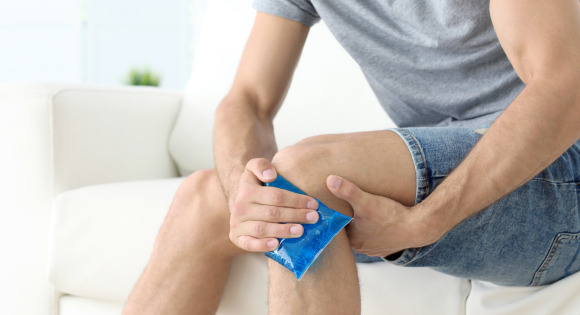Tendonitis, also known as tendinitis, is a common condition that happens when a tendon becomes inflamed or irritated. Tendons are the thick, fibrous cords that attach muscles to bones. They play a critical role in our body’s movement and stability.
Tendonitis can affect any tendon in the body, but it is most commonly found in the shoulders, elbows, wrists, knees, and ankles. Athletes and individuals who engage in repetitive motions are at a higher risk of developing tendonitis, but it can also be caused by injury or overuse.
Symptoms of Tendonitis
The most common symptom of tendonitis is pain and tenderness around the affected area. You’ll experience either sharp or dull pain which can worsen with movement or activity. In severe cases, the pain may even be present while resting.

Related: 9 Home Remedies That Work
Other symptoms of tendonitis include:
- Stiffness or limited range of motion in the affected joint
- Swelling or redness around the affected area
- A feeling of weakness in the affected muscle
Causes of Tendonitis
Tendonitis can be caused by a variety of factors, including:
Aging
Our tendons become less flexible and more prone to injury and inflammation as we age. This can lead to tendonitis even in individuals who are not engaged in high-impact activities.
Repetitive motions
Overusing a particular joint or muscle group can cause tiny tears in the tendon, leading to inflammation and pain. This is common in athletes and individuals who engage in activities that entail repetitive motions, like tennis, golf, or running.
Injury
Unexpected or sudden injury or trauma can cause the tendon to tear or become inflamed, leading to tendonitis. This is commonplace in individuals who engage in activities with sudden movements or impacts, like basketball or football.

Medical Issues
Certain medical conditions, such as rheumatoid arthritis or gout, can increase the risk of developing tendonitis.
Poor Technique or Posture
Poor posture or technique can put extra stress on the tendons during activities such as weightlifting or running, leading to inflammation and pain.
Tendonitis Treatments
The treatment for tendonitis depends on the severity of the condition and the affected area. In general, the following treatments are recommended:
- Rest – Resting the affected area is essential to allow the tendon to heal. This may involve reducing or avoiding activities that aggravate the condition.
- Ice – Apply ice to the affected area to help reduce inflammation and pain. Ice should be applied for 15-20 minutes several times a day.
- Compression – Use a compression bandage to wrap the affected area. This will help reduce swelling and offer support.
- Elevation – Elevate the affected area above your heart level to help reduce swelling.
- Medications – Over-the-counter pain relievers such as acetaminophen or ibuprofen can help reduce pain and inflammation. A doctor may prescribe stronger pain medication or steroid injections in severe cases.
- Physical therapy – Physical therapy can help strengthen the affected area and improve flexibility. A physical therapist can also provide guidance on proper technique and posture during activities to reduce the risk of future injury.
- Surgery – In rare cases, surgery may be necessary to repair a severely damaged tendon.

Prevention of Tendonitis
The best way to prevent tendonitis is to reduce the risk factors that can lead to the condition. This includes:
- Gradually increase the duration and intensity of physical activity to prevent injury due to overuse.
- Proper technique and posture during physical activity can help reduce stress on the tendons.
- Use appropriate equipment, like shoes or braces, to support and reduce the risk of injury.
- Take frequent breaks during activities to give your tendons a chance to rest and recover.
- Maintain a healthy lifestyle with a balanced diet and frequent exercise to keep the tendons strong and flexible.
- Listening to your body and paying attention to any pain or discomfort is also essential. Stop and rest the affected area if you experience pain or discomfort during an activity. Pushing through the pain can lead to further damage and increase the risk of developing tendonitis.
Final Thoughts
In conclusion, tendonitis is a common condition caused by various factors, including overuse, injury, poor posture, and medical conditions. The symptoms of tendonitis include pain, tenderness, swelling, and stiffness around the affected area.
If you experience pain or discomfort, it’s important to listen to your body and seek medical attention when necessary. By taking proper care of your tendons, you can reduce the risk of developing tendonitis and maintain a healthy, active lifestyle
Sending you lots of light, love and healing-induced vibes!
Anthea

